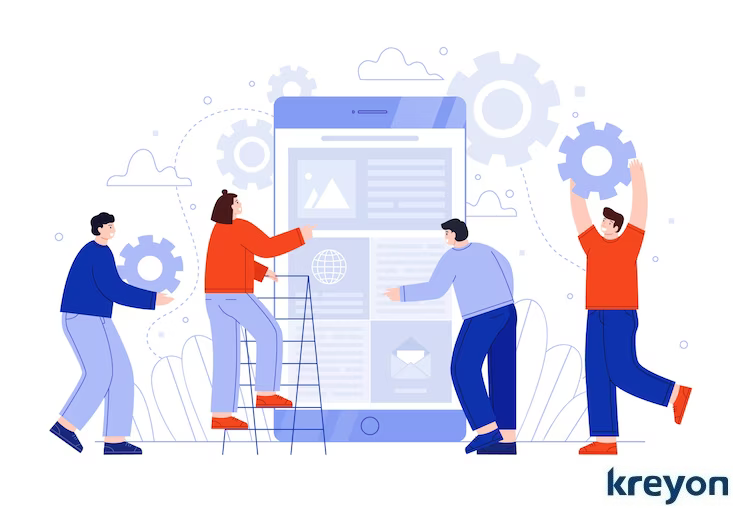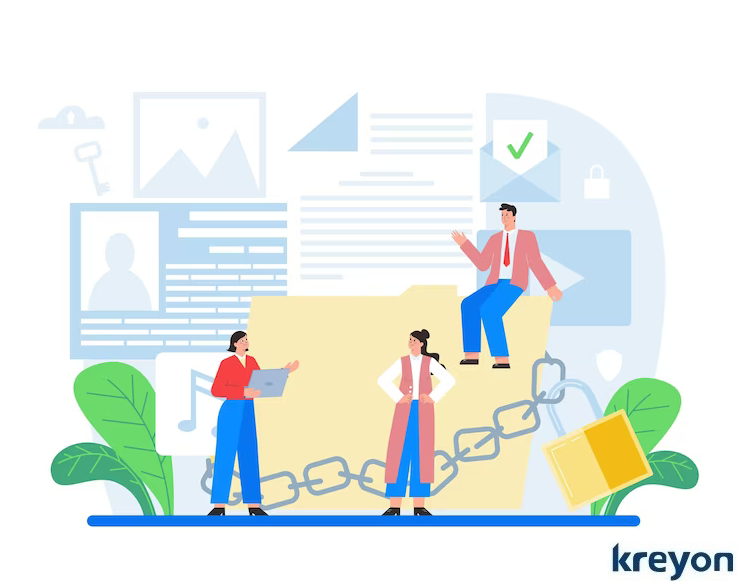Best Practices for Implementing Enterprise Application Services

The best practices for implementing enterprise application services can ensure that the software meets the required quality standards, is delivered on time and within budget, and meets the needs of end-users and stakeholders.
Enterprise software development often involves creating large scale, complex systems that are critical to an organization’s operations. Getting it right takes commitment, due diligence and ever evolving set of skills to deliver the most compelling results. Here’s a look at some of the best practices for enterprise application services:
1. Identify the Test Scenarios Inline with the Business Priorities:
By automating user testing for enterprise software services, you can improve the overall quality of the software, reduce the time and cost of testing, and speed up the delivery of new features and updates.
Identify the critical user test scenarios that need to be automated, such as user flows, error conditions, and edge cases. Involve a test driven development plan to ensure user scenarios and key outcomes are tested early in the development process.
Integrate automated testing with the enterprise software development to improve the quality of the deliverables. This may involve configuring the testing tool to interact with the software services using APIs, web services, or other integration methods.
Run the automated tests on a regular basis to identify issues and bugs as early as possible. This can help ensure that the enterprise software services are working as intended and meet the required quality standards as per intended business outcomes.
Fix any issues and bugs identified through the automated testing process. This may involve making changes to the enterprise software services, the automated test scripts, or both. Also, once automation testing is done, the application can be used by the early end users for their inputs and validations.
2. Enterprise Application Integration

Enterprise Application Integration (EAI) is the process of connecting different software applications and systems within an organization to enable them to communicate and exchange data seamlessly. The goal of EAI is to create a unified, integrated view of an organization’s business processes and data by linking disparate systems and applications.
EAI involves a variety of techniques and technologies, including middleware, APIs, web services, and messaging protocols, to enable different systems to communicate and exchange data. It often involves creating a central data repository or hub that can be used to store and manage data from different applications.
EAI can provide a range of benefits to organizations, including increased efficiency and productivity, improved decision-making through better data visibility, and enhanced customer experience through more seamless and integrated processes. EAI can also reduce data duplication and improve data quality by enabling data to be shared and managed more effectively across different applications and systems.
3. Data Quality Measures
Data quality is a crucial consideration for enterprise software development. Poor data quality can lead to inaccurate or incomplete information, which can negatively impact business operations and decision-making.
Develop a data governance framework that defines data standards, policies, and procedures for data management, quality control, and privacy.
Understand and define clear metrics for measuring data quality, such as accuracy, completeness, consistency, and timeliness for your enterprise application. For e.g. accounting data should have all elements clearly spelt out to generate balance sheet, profit & loss and other financial reports for the business.
All data sources should be mapped accurately to provide the right information in realtime. Data quality issues can cause malfunctioning of an application, for e.g. missing values, duplicate records, and inconsistent data.
Use automatic testing procedures to develop data monitoring processes to identify and address data quality issues in real-time. Once the data sources are mapped and integrated, end-users can then ensure that the data is relevant and useful to the business.
4. Leverage Latest Technologies

Enterprise software development is getting incrementally more sophisticated thanks to the new developments. Today, you can build and query systems to answer your questions. You can use AI to analyze user behavior and feedback to improve user experience by providing personalized recommendations, search results, and notifications.
The technology tools can also be used to improve security by detecting anomalies, identifying potential issues, and mitigating risks. AI based software leverages data-driven insights and recommendations to facilitate decision making, such as identifying trends, detect hidden patterns and correlations in data, predicting outcomes, and recommending courses of action for users.
5. Build & Versioning
The build process and versioning are critical aspects of enterprise software development, as they ensure that the software is built correctly, tested, and deployed to production in a controlled and consistent manner.
Automate & document changes to each version of the software, including bug fixes, feature enhancements, and performance improvements. By automated build processes, it is easier to communicate version changes to stakeholders, such as customers, support staff, and development teams, to ensure that everyone is aware of the changes and their impact.
Prioritizing the important features for business and doing away with unnecessary code bloat is an integral part of enterprise software development. By using a version control system, you can track changes to the code, feature enhancements, improvements and manage different versions of the software.
Companies need to use continuous integration and continuous deployment, to ensure that software changes are tested, deployed, and monitored in a controlled and consistent manner throughout application lifecycle. Any enterprise software failure shouldn’t leave the data or the application in an indeterministic state. The build and versioning system should be capable of restoring the system to a failsafe and graceful exit.
6. Ongoing Maintenance & Development

A maintenance & development roadmap is a plan that outlines the steps to maintain and update an enterprise application over time. The enterprise applications are dynamic in nature and change as frequently as the business does.
Conduct a thorough assessment of the application to identify potential areas for improvement, such as performance, security, feature enhancements and user experience etc. Customers using their products may have problems with it or don’t know how to use certain features, so it’s always a good thing to keep all your customer support channels open in this stage. Keep the application up-to-date with the latest technologies, data & security standards etc.
With well defined goals and business priorities, each maintenance task, such as improving performance, increasing security, reducing process time or enhancing the user experience can be implemented. The timeline and budget for ongoing tasks can be undertaken as per business objectives. Companies can use application modernisation to support future business growth and changes, and by using modular, reusable components.
7. Evaluation of Enterprise Application
The performance of the enterprise application can be determined by assessing whether it effectively meets the goals of the organization, its customers and users. This can be evaluated through various metrics, such as user adoption rate, productivity improvements, reduction in errors, reduction in process times, cost savings, customer satisfaction, and other key performance indicators.
User feedback and input can also provide valuable insights into the application’s usefulness and potential areas for ongoing improvement. The effectiveness of enterprise application can be monitored overtime to identify areas for improvement and to ensure that the application is meeting the required quality standards.
Ultimately, the value added for a business is best described in terms of the cost savings, revenue generation and financial impact of the application on the business.
Kreyon Systems is an enterprise software development company using latest technologies to develop high end solutions for clients. If you have any questions for us, please get in touch with us.
